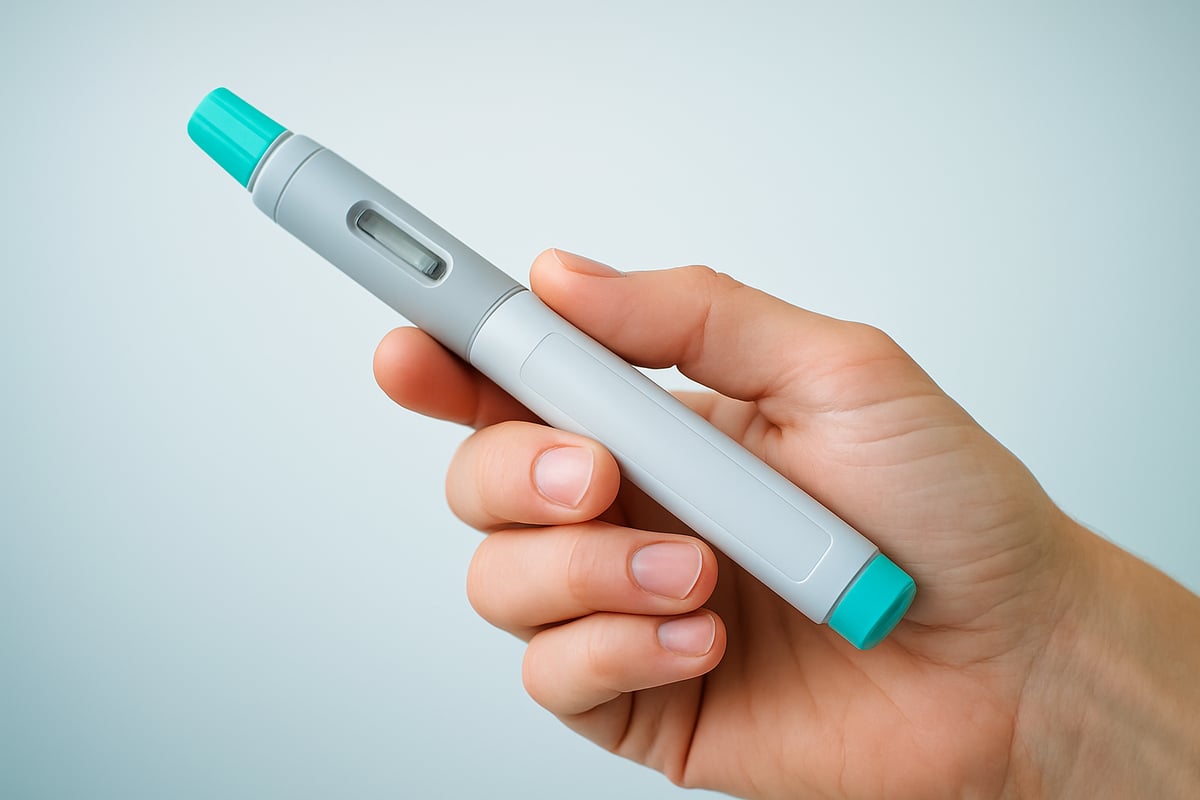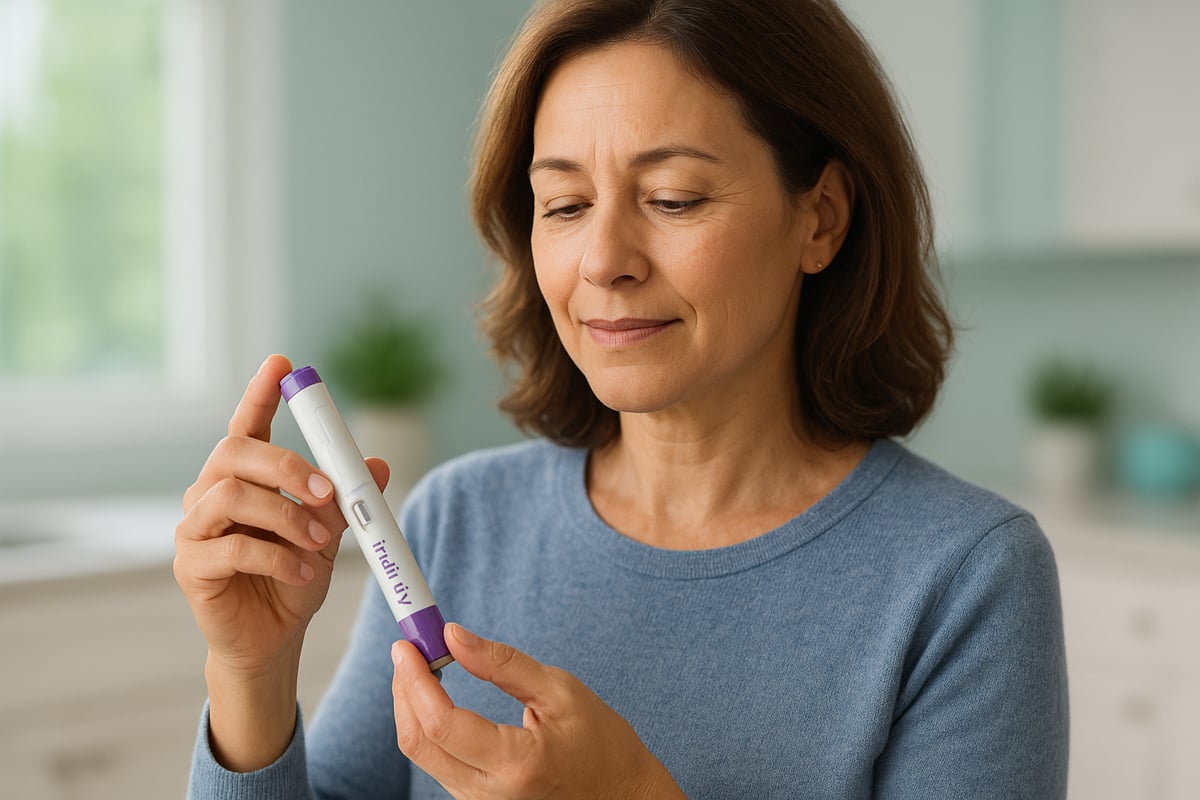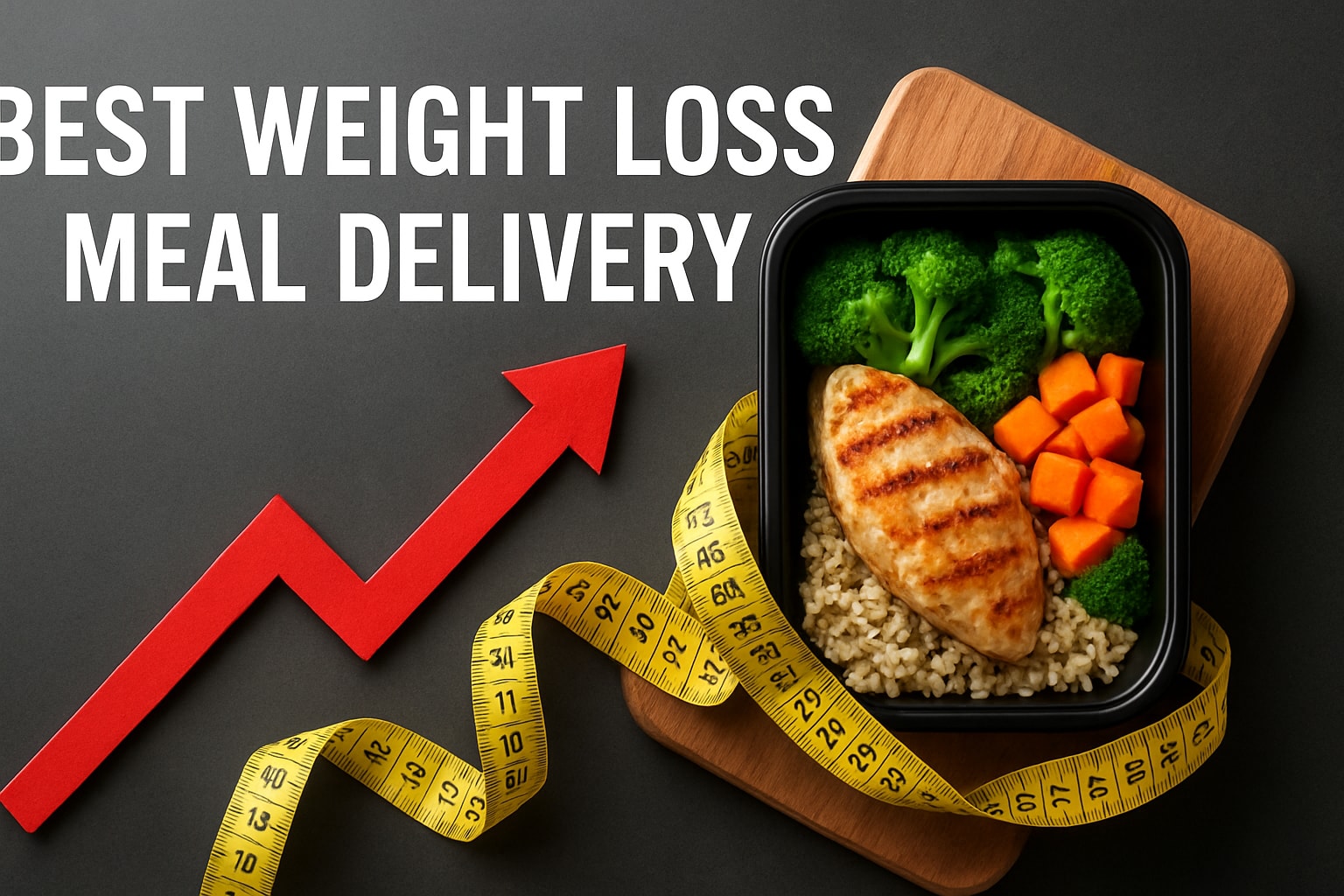Struggling to lose weight while managing diabetes? You are not alone. In 2025, more people are exploring the potential of trulicity weight loss as part of their health journey. Trulicity, known for its role in diabetes care, is gaining recognition for its impact on weight management.
Imagine feeling empowered and supported by science-backed strategies designed for real results. This guide will help you understand how Trulicity works, what the latest research shows, and how to maximize your outcomes with practical tips.
Ready to take control of your health? Start your journey with expert support.
Understanding Trulicity: What It Is and How It Works
Navigating the world of trulicity weight loss in 2025 means understanding how this medication fits into both diabetes care and modern weight management. Trulicity, also known as dulaglutide, is at the forefront of new approaches to healthy living. Whether you're considering it for the first time or want to optimize your results, a clear grasp of its uses, mechanism, and position in today's landscape is essential.

What is Trulicity?
Trulicity is a prescription medicine in the GLP-1 receptor agonist class, designed primarily for adults with type 2 diabetes. Its main FDA-approved roles are to improve blood sugar control and reduce cardiovascular risks. While trulicity weight loss is not an official FDA indication, many people experience it as a secondary benefit.
Administered as a once-weekly injection, Trulicity comes in several dosing options:
- 0.75 mg
- 1.5 mg
- 3 mg
- 4.5 mg
Compared to other GLP-1 medications such as Ozempic or Wegovy, Trulicity’s unique profile offers both flexibility and broad use. It is not suitable for everyone. People with a personal or family history of medullary thyroid carcinoma or those with multiple endocrine neoplasia syndrome type 2 should avoid it. Always consult your healthcare provider to find the best fit for your needs.
If you want to learn about practical strategies to avoid weight gain while using medications, check out essential tips for avoiding weight gain.
For personalized support and resources, explore the Trulicity support hub.
How Trulicity Promotes Weight Loss
The science behind trulicity weight loss is rooted in how the medication mimics the natural hormone GLP-1. This action triggers several beneficial effects:
- Increases insulin release after meals
- Suppresses glucagon, which helps control blood sugar
- Slows gastric emptying, leading to prolonged feelings of fullness
- Reduces appetite and overall calorie intake
These combined effects often result in weight reduction, especially when paired with a healthy lifestyle. However, not everyone will see the same results. Some may lose up to 10 pounds over 36–52 weeks, particularly at higher doses. Individual response can vary due to genetics, baseline weight, and lifestyle choices.
Clinical studies, such as those summarized in Trulicity's Clinical Trial Data, highlight the potential for meaningful weight change, especially for those committed to long-term therapy. For additional science-backed advice, see dietitian advice for healthy weight loss.
If you’re seeking a community or digital tools to track your progress, the weight management portal offers resources to help you stay accountable.
Trulicity’s Role in the 2025 Weight Loss Landscape
In 2025, trulicity weight loss is more relevant than ever as GLP-1 medications gain traction for both diabetes and obesity support. With the rise of new therapies and shifting guidelines, Trulicity remains a trusted option for those seeking sustainable results.
Current trends show increasing prescription rates, as more healthcare providers recognize the dual benefits of glucose and weight control. However, it is crucial to understand that Trulicity is not a magic solution. Misconceptions about effortless weight loss can lead to disappointment if expectations are not managed.
Medical supervision is vital. Regular check-ins help ensure safety, especially as new research emerges and dosing guidelines evolve. If you’re interested in how neuroscience can enhance your weight management, read about neuroscience-based weight loss transformation.
Looking for real-world inspiration and support? Visit the weight loss success stories page. For those ready to take control, the step-by-step guide to GLP-1 weight loss is a great starting point.
What the Latest Research Reveals: Trulicity and Weight Loss Outcomes
Exploring the science behind trulicity weight loss is essential for anyone considering this medication in 2025. Recent clinical trials, real-world experiences, and evolving safety data all help clarify what patients and providers can expect. Let’s break down the evidence and key factors that shape outcomes.

Clinical Trial Evidence and Dosage Impact
The foundation of trulicity weight loss knowledge comes from robust clinical trials. The AWARD-11 study is a leading source, showing that higher dulaglutide doses (3 mg and 4.5 mg) can lead to greater weight reduction in adults with type 2 diabetes who are also on metformin. Over 52 weeks, participants taking 4.5 mg lost an average of 10 pounds, while those on 1.5 mg saw about 7 pounds lost. These results highlight a clear dose-response relationship.
It’s important to note that trulicity weight loss was a secondary outcome in most studies, so not every participant experienced significant changes. Those with higher baseline BMI tended to lose more weight. The study populations mainly included adults living with type 2 diabetes, so results may differ for other groups.
Statistical significance was achieved in these trials, but individual responses varied. Real-world results sometimes show less dramatic changes, as adherence and lifestyle factors come into play. For more detailed data, see the AWARD-11 Study on Dulaglutide.
If you want to explore more about healthy weight management options, visit this comprehensive resource.
Factors Influencing Weight Loss with Trulicity
Trulicity weight loss is not guaranteed for everyone. Genetics, initial weight, and how consistently you follow your medication routine all play crucial roles. Some people experience more significant changes due to their metabolic profile, while others may see little or no effect.
Duration of treatment and proper dose escalation are vital for optimal outcomes. Patients often start at a lower dose, gradually increasing as tolerated. The presence of other medications, like insulin or sulfonylureas, can impact results and side effects.
Age, gender, and lifestyle choices such as diet and exercise also influence trulicity weight loss. Some patients even gain or maintain weight despite therapy. For tips on overcoming common weight loss mistakes, check out this practical article.
Find more support and personalized tools for your journey on this dedicated platform.
Safety, Side Effects, and Long-Term Considerations
Safety is a top priority when using any GLP-1 medication. The most common side effects with Trulicity are gastrointestinal, including nausea, vomiting, diarrhea, and decreased appetite. For many, these symptoms are mild and improve over time, but they can affect trulicity weight loss by reducing calorie intake.
Rare but serious risks include pancreatitis, potential thyroid tumors (seen in animal studies), gallbladder disease, and kidney injury. Regular monitoring of kidney function and thyroid health is recommended. Patients using insulin or sulfonylureas need to watch for hypoglycemia.
Pregnant individuals and children should avoid Trulicity unless specifically advised by a healthcare provider. Always consult your medical team if you experience severe symptoms or need to adjust your therapy. For practical advice on injections, read How to Take Trulicity: 6 Pharmacist Tips for Trulicity Injections.
Stay informed about long-term results and connect with diabetes educators through this trusted resource.
If you are looking for neuroscience-backed weight loss methods, explore this in-depth guide.
Get ongoing updates and community support at this interactive portal.
Step-by-Step Guide: Using Trulicity for Weight Loss in 2025
Embarking on your trulicity weight loss journey in 2025 requires a thoughtful, evidence-based approach. This step-by-step guide walks you through each stage, ensuring you make informed decisions, maximize your results, and minimize risks. Whether you are just considering Trulicity or actively managing your regimen, these steps are designed to support your success.

Step 1: Consult with Your Healthcare Provider
Before starting trulicity weight loss therapy, schedule a comprehensive consultation with your healthcare provider. Discuss your full medical history, including any past thyroid issues or family history of medullary thyroid carcinoma. Your provider will review current medications and assess your readiness for Trulicity.
Expect to undergo lab tests, such as kidney function and thyroid screening, to ensure safety. Set realistic weight loss expectations and talk openly about potential side effects. Insurance coverage and prescription requirements can vary, so bring any questions about access or costs. This collaborative approach empowers you to make the right choice for your health.
For more guidance on preparing for your appointment, visit weight loss consultation essentials.
Step 2: Initiating Trulicity Therapy
Once approved for trulicity weight loss, your provider will typically start you at 0.75 mg once weekly. Trulicity is administered as a subcutaneous injection in your abdomen, thigh, or upper arm. Rotate injection sites each week to prevent irritation and avoid injecting into the same spot repeatedly.
Administer the injection at a time that fits your routine, as Trulicity does not require coordination with meals. In the first week, you might notice mild gastrointestinal symptoms like nausea or decreased appetite. These effects are common and usually improve as your body adjusts.
For step-by-step instructions on self-injection, review Trulicity injection tips. For more on starting your medication confidently, check out beginning your weight loss plan.
Step 3: Titrating Up for Maximum Benefit
Your trulicity weight loss plan may involve gradually increasing your dose. After four weeks, your provider could recommend moving to 1.5 mg, and over time, possibly up to 3 mg or 4.5 mg, depending on your response and tolerance. Dose adjustments are based on blood glucose control, weight changes, and how well you handle side effects.
If you experience persistent nausea or other issues, your provider might slow the escalation or pause increases. Open communication is essential throughout this phase. For detailed information about dosing and ongoing research, see the Dulaglutide Phase 3 Clinical Trial 2025.
For tips on tracking your progress, visit dosing and adjustment resources.
Step 4: Monitoring Progress and Managing Side Effects
Consistent monitoring is crucial to a successful trulicity weight loss experience. Keep a record of your weight, blood glucose, and overall well-being. Side effects like nausea, diarrhea, or decreased appetite are common early on. Eating smaller, frequent meals and staying hydrated can help minimize discomfort.
Watch for any warning signs such as severe abdominal pain or allergic reactions, and seek medical attention if needed. Your provider may adjust your dose or suggest supportive care if side effects persist. Digital health tools, such as medication reminders and progress trackers, can keep you motivated.
If you are not meeting your goals, discuss alternative therapies or strategies with your care team. For more on managing side effects, read mindful eating and neuroscience strategies for weight loss. Explore side effect management tips for additional support.
Step 5: Integrating Lifestyle Changes for Enhanced Results
The most effective trulicity weight loss plans combine medication with healthy lifestyle habits. Focus on balanced, nutrient-dense meals and aim for moderate physical activity most days. Behavioral strategies, such as setting realistic goals and tracking progress, can boost your motivation.
Address emotional eating and stress with mindfulness techniques. Remember, Trulicity works best when paired with positive routines. For meal planning and exercise inspiration, explore healthy weight loss habits. Connect with support groups and certified educators via weight loss community resources.
Discover more tips for lasting change in your personalized weight loss journey, and empower yourself with the latest science-backed strategies.
Real-World Experiences: Success Stories and Challenges
Real-life experiences offer invaluable perspective for anyone considering trulicity weight loss. While clinical trials provide data, the day-to-day journeys of real patients reveal what it’s truly like to use this medication for weight management. These stories show both the victories and the hurdles, offering hope and practical guidance.

Patient Case Studies and Testimonials
Many people have found success with trulicity weight loss, especially when combining the medication with healthy lifestyle changes. For example, one patient in her early 50s lost nearly 12 pounds over 10 months, reporting more stable blood sugar and increased energy. Another, a man in his 40s with a higher starting BMI, shed 10 pounds in nine months. Both credited their results to weekly injections, a balanced diet, and consistent activity.
Patients often mention improved motivation and better glucose control as unexpected benefits. Some share that trulicity weight loss helped them regain confidence, making it easier to stay engaged in diabetes management programs. However, challenges are common. Side effects like nausea or appetite changes can make the first few weeks difficult. Plateaus sometimes occur after initial weight loss, requiring adjustments.
Quotes from community forums highlight both optimism and realism: “The weight came off slowly, but I felt healthier overall,” shares one user. Another adds, “I had days where I wanted to quit, but the support from my care team and tracking my progress using digital tools kept me going.” If you’re curious about what others have achieved, discover inspiring weight loss journeys, or explore more detailed patient stories.
Common Obstacles and How to Overcome Them
Starting trulicity weight loss is not without its obstacles. Gastrointestinal side effects, such as nausea or mild stomach upset, are frequently reported, particularly in the first month. Most patients find these symptoms subside with time. Tips from clinicians and experienced users include:
- Eat smaller, frequent meals
- Stay hydrated
- Avoid greasy or heavy foods
Another common hurdle is slow or stalled progress. Weight loss may plateau, especially if physical activity drops or dietary habits slip. Experts recommend reviewing your routine and considering new habits, like meal planning with healthy recipes, or scheduling regular walks. If motivation wanes, connecting with support networks or leveraging mindful eating techniques can help.
Insurance coverage and medication costs can also pose challenges. Many patients suggest speaking with a diabetes educator, using mobile health apps for reminders, and staying in close contact with your provider. Remember, long-term success with trulicity weight loss often depends on consistent self-care and seeking help when you need it.
Comparing Trulicity to Other GLP-1 Medications
Trulicity weight loss results are often compared to those seen with other GLP-1 medications like Ozempic, Wegovy, and Zepbound. While all are GLP-1 receptor agonists, only some are FDA-approved specifically for obesity treatment. Trulicity is approved for diabetes management, but many patients still experience meaningful weight loss.
Differences exist in dosing schedules, side effect profiles, and insurance coverage. For example, Wegovy and Zepbound may offer greater average weight reduction, but some users prefer Trulicity’s once-weekly dosing and tolerability. If you are considering switching therapies or want to track the latest options, GLP-1 Pipeline Update August 2025 offers insights into the evolving landscape.
For a closer look at how these medications stack up, see how Trulicity compares to other options, or dive into expert tips for maximizing results. Support is available through online communities and personalized coaching.
Maximizing Your Weight Loss: Expert Tips and Future Outlook
Taking your trulicity weight loss journey to the next level requires more than just medication. Expert strategies, future developments, and the right tools can make a significant difference. Let’s explore how to maximize your results and stay ahead in 2025.
Expert-Recommended Strategies for Better Outcomes
Success with trulicity weight loss starts with consistency. Take your medication exactly as prescribed, and do not miss doses. Adherence helps maintain steady GLP-1 levels and supports both weight and blood glucose control.
Customize your diet and exercise routine to complement trulicity weight loss. Focus on balanced, nutrient-dense meals and regular physical activity. Setting SMART goals—Specific, Measurable, Achievable, Relevant, and Time-bound—keeps progress clear and motivates you to stay on track.
Use digital health tools to track weight, food intake, and medication reminders. Apps can help you see patterns and celebrate milestones. Regular check-ins with your healthcare provider allow you to review progress and adjust your plan.
Stay updated with the latest research and guidelines. Join support groups or online communities for accountability. For neuroscience-based guidance, explore science-backed methods.
Remember, trulicity weight loss works best when medication, lifestyle, and support systems come together. Small changes, tracked consistently, can lead to lasting results.
The Future of Trulicity and GLP-1 Therapies in Weight Management
The landscape of trulicity weight loss is evolving rapidly. Research is expanding the potential of GLP-1 therapies for obesity and metabolic health, with ongoing studies aiming to refine dosing and delivery methods.
Future innovations may include oral GLP-1 medications or longer-acting injectables, making treatment more convenient. Watch for potential FDA updates on new indications, which could broaden access and insurance coverage for more patients.
Personalized medicine is another trend shaping the future of trulicity weight loss. Genetic profiling and individualized treatment plans may soon help match patients with the most effective therapies. Ongoing clinical trials are exploring trulicity’s impact on diverse populations and long-term outcomes.
Stay informed by following updates from trusted sources. For the latest science and trends, get up-to-date research insights and check out mindful eating strategies.
Looking ahead, trulicity weight loss will remain a cornerstone for those seeking safe, sustainable results.
Additional Resources and Support Tools
Access to the right resources is essential for ongoing trulicity weight loss success. Start with education: review pharmacist tips for Trulicity injections to ensure correct use and minimize side effects.
Leverage mobile apps that provide reminders for injections, track weight, and offer nutritional guidance. For meal planning and exercise ideas, find practical resources here.
Connect with certified diabetes educators and nutritionists for tailored support. Many find success by joining patient communities, both local and online. For comprehensive diabetes management, explore our trusted support tools.
If you are looking for ongoing inspiration, get personalized support for your journey. You can also deepen your knowledge with weight loss and diabetes management resources. With the right support, trulicity weight loss becomes a more achievable and sustainable process.
You've just explored the latest expert strategies for using Trulicity to support your weight loss journey in 2025, including how to maximize results with lifestyle changes and neuroscience-based habits. If you're ready to take the next step and discover a more personalized path to healthier choices—without diets or guilt—I've got a simple way for you to get started. In just a few minutes, you can uncover insights tailored to your needs and begin reprogramming your mindset for lasting success. Curious about what might work best for you? Start Quizz















